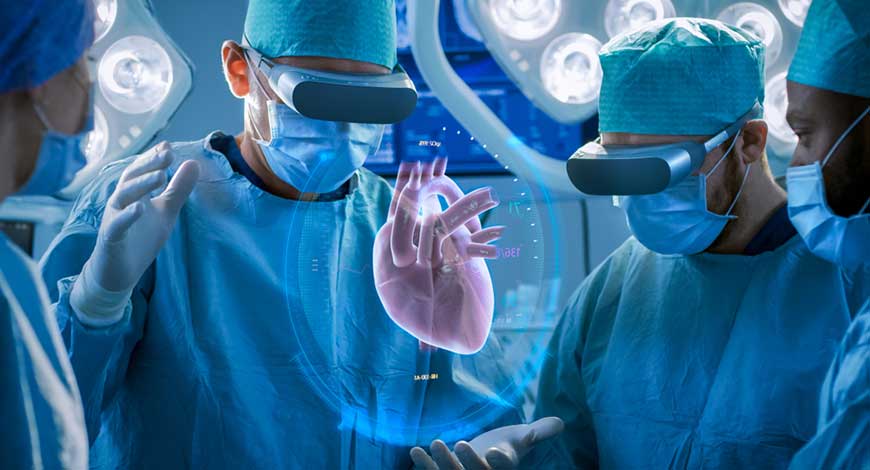Trends
How AR, VR are shaping innovative approaches in operating rooms

Health is standing on the cusp of a revolution and augmented reality (AR) and virtual reality (VR) technologies are at the forefront, transforming everything from surgical training to patient mental health care.
The technologies are not just changing the game; it is redefining the playing field, offering unparalleled precision, immersion and connectivity. This article explores the multifaceted impact of AR and VR in healthcare, shedding light on its potential to enhance patient care and provider capabilities.
A new dimension in surgical training and execution
Integrating AR and VR into surgical training represents a seismic shift in medical education. Surgeons can immerse themselves in hyper-realistic simulations, honing their skills without the risks associated with traditional training methods.
AR, in particular, offers real-time, 3D visual overlays during surgeries, providing unprecedented anatomical insights and precision; this elevates the surgeon’s capabilities and enhances patient safety and outcomes.
3D imaging: visualizing the unseen
The power of 3D imaging in healthcare, bolstered by AR and VR, cannot be overstated. These technologies transform traditional 2D medical imaging into interactive, three-dimensional visualizations, allowing healthcare professionals to examine complex structures in detail. This depth of visualization aids in accurate diagnoses, personalized treatment planning, and patient education, demystifying complex medical information.
Remote patient monitoring: care beyond walls
In an era where access to healthcare is more critical than ever, AR and VR are breaking down geographical barriers through remote patient monitoring. These technologies enable healthcare providers to offer real-time guidance, perform assessments, and even conduct remote procedures, ensuring continuous care regardless of distance. The technology can expand access to quality healthcare and foster a more inclusive healthcare ecosystem.
A beacon of hope for mental health
The impact of AR and VR on mental health is profound. It offers innovative therapeutic avenues for conditions like loneliness, addiction, depression and more. Through immersive experiences, patients can explore and address their mental health issues in a safe and controlled environment. Whether through virtual support groups, exposure therapy or simulated social interactions, AR and VR are opening new doors for mental health treatment and support.
Encouraging movement and exercise
Immersive technologies make exercise more engaging and accessible through gamification. Virtual reality workouts, augmented reality fitness apps, and immersive wellness experiences not only encourage physical activity but also make it enjoyable, addressing issues like lack of exercise and its associated health risks.
The road ahead: challenges and opportunities
It is essential to address the challenges accompanying AR and VR adoption in healthcare. Issues such as data privacy, technological disparities and the need for comprehensive training must be tackled to realize the potential of these technologies. However, the opportunities for enhancing healthcare quality, accessibility and patient outcomes are immense, heralding a new era of medical care.
Integrating AR and VR in healthcare is more than a technological advancement; it’s a paradigm shift towards more personalized, efficient and accessible care.
From revolutionizing surgical training to offering new avenues for mental health treatment, the potential of these technologies to improve patient quality of life is boundless. As the health sector continues to explore and embrace these innovations, the future of healthcare looks brighter and more promising than ever. MobiHealthNews













